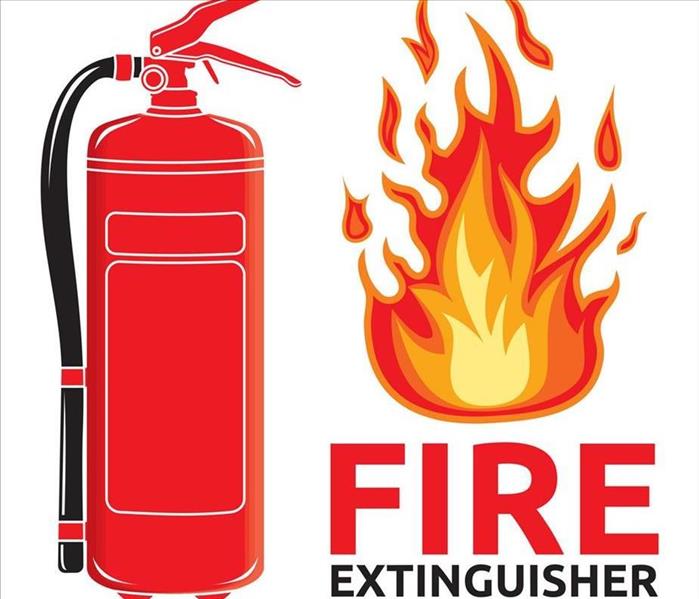Fire Extinguisher Classes
2/14/2019 (Permalink)
The fire classification system is designed to categorize fires into groups based on the type of fuel involved. Each fire class is represented by a letter of the alphabet (with the electrical which are simply referred to as “electrical fires”) and an icon. This helps users to select an appropriate fire extinguisher in the event of a fire.
Class A Fires
- Solid Combustibles
- Fire involving solid combustible materials such as wood, textiles, straw, paper, coal etc.
Class B Fires
- Flammable Liquids
- Fire caused by combustion of liquids or materials that liquefy such as petrol, oils, fats, paints, tar, ether, alcohol, stearin, and paraffin.
Class C Fires
- Flammable Gases
- Fires caused by combustion of gases such as methane, propane, hydrogen, acetylene, natural gas and city gas.
Class D Fires
- Flammable Fires
- Fires involving combustibles metals such as magnesium, aluminum, lithium, sodium, potassium and their alloys. Combustible metal fires are unique industrial hazards which require special fire extinguishers.
Class F Fires
- Combustible Cooking Media
- Fires involving particularly hot or deep oil and grease fires, such as deep fat fryers in commercial kitchens or overheated oil pan fires in homes. Normal water-based extinguishers with large droplets would cause an ‘explosion’ of stream and carry burning oils and fats from the container. Equally, a CO2 extinguishers jet would carry burning oil out of the container and also would have in-sufficient cooling effect to stop reigniting. Wet chemical extinguishers, on the other hand, lay a cooling foam layer on top of the burning fat/oil and react with the liquid, stopping air supply to the fire.
Electrical Fires
- Electrical Appliances
- Fires involving electrical appliances such as computers, electrical heaters, stereos, fuse boxes etc.
Call SERVPRO of Vermilion County for any of your fire needs, 24/7 at (217) 443-0077. (LB)





 24/7 Emergency Service
24/7 Emergency Service
